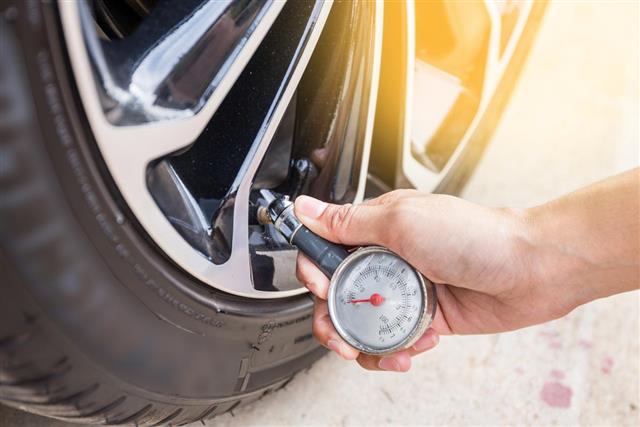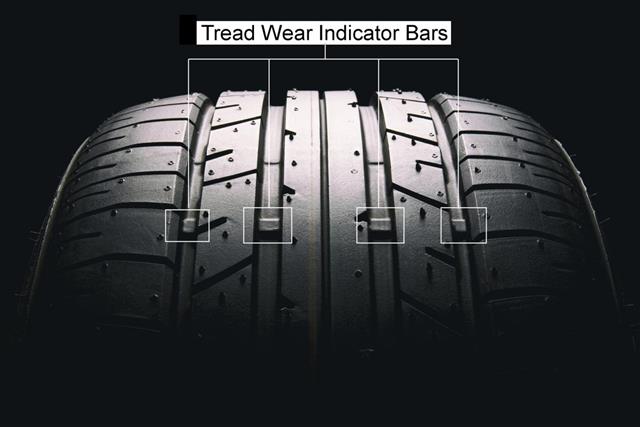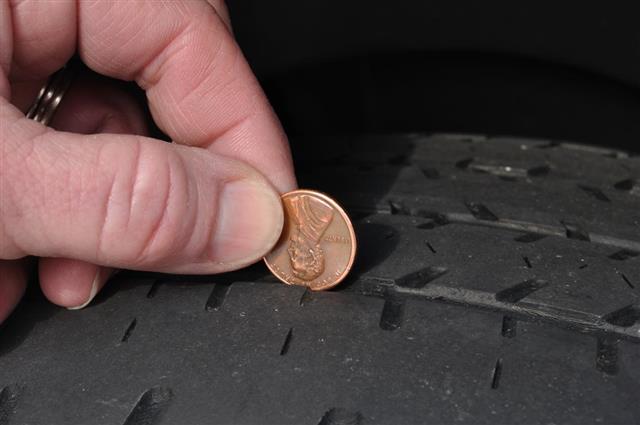
Maintenance of a vehicle is paramount if one wants to have a safe ride. However, while vehicle owners keep their engines running smoothly, and fix dents and scratches with regularity, they forget to look after the tires. In this article, we will study the dangers of having bald tires, and how you can take suitable precautions to avoid fatal accidents.
A common misconception that most people have is that, the pressure figure mentioned on the sidewall of the tire is the optimal pressure, when in fact that number is the maximum pressure. Usually, the optimum pressure figures are mentioned inside the owner’s manual guidelines.
A recent survey done by the Rubber Manufacturers Association found that over 85 percent of American drivers do not know the proper procedure to inflate tires, and to what pressure. Also, approximately 30 million American vehicles have at least one bald tire. It is inevitable that car tires wear down over time. However, driving with bald tires and having a tire failure can be disastrous, leaving you without any control on the vehicle, or stranded in some godforsaken place without any way to get home. Driving with bald tires is like gambling; the tires are sure to give way sooner or later. It is important to perform regular checks and replacements to have a safe ride. Besides, driving with good tires makes the entire experience more relaxing and easy. It is recommended that the tire tread be checked at least once a month.
Diving at high speeds, improper inflation, hard cornering, and improper alignment result in quicker wear and tear of the tires. So, why are bald tires dangerous? Let’s find out.
- Bald tires do not have enough tread, which can result in a blowout or other forms of damage to the vehicle, especially when going over potholes at high speeds without any warning.
- Bald tires are old tires, and old tires tend to get damaged more easily with hard impacts, which makes controlling the vehicle difficult in emergency situations.
- Due to the low amount of tread, handling in a vehicle becomes more difficult than usual.
- Using bald tires in snow or icy conditions is risky, as less traction will cause the vehicle to slip and skid due to strong winds or large vehicles that pass by.
- It is nearly impossible to brake safely during emergencies, and this usually ends with disastrous results.
- Similar to driving in winter conditions, using bald tires on wet roads in the rain is risky, and can lead to the vehicle slipping and skidding. It can even cause the vehicle to hydroplane, making it near impossible to control.
- Bald tires in extremely poor condition might cause shaking of the steering, which is a imminent sign to get the tires replaced.
- Driving in such a condition requires more alertness and attention, and as a result, causes fatigue even faster, which can cause accidents, especially when driving for long distances.
- Due to lack of traction, bald tires can affect the rate of acceleration and the overall performance of the vehicle.
- Such tires also tend to get punctured more easily.
- Bald tires do affect gas mileage, because they have lesser traction, which makes the engine run harder, giving poor fuel economy.
- Driving with bald tires is illegal. You can get a ticket for this if a police officer stops you for any reason.
- If you are involved in an accident, bald tires can be used as a proof of negligence against you, and you may have your insurance amount increased, and could also get sued by the other party involved in the accident.
Ideally, the tread of a tire should not be less than of 1/16 of an inch. In wet or snowy conditions, it is best to have more than double of that. One can find out the depth of a tread using a gauge. However, there is an easy test to check the approximate depth of the tread, and it will only cost you a penny.
Lincoln Penny Test : For this method, you will only need a penny that is stamped with the Abraham Lincoln’s face. All you have to do is to insert the penny upside-down with the top of Lincoln’s head going into the tread. If the top of the head is covered by the tread, the tire is still usable and has a safe amount of tread left. However, if the head is visible at any point of the tire, it is time to replace this bald tire with a new one. It is important that while you check if your tire is bald, look for cuts, cracks, punctures, bulges, and splits, as these can dramatically shorten the lifespan of the tire. Ideally, one should replace all four tires at the same time. However, if you are on a budget, then replace two tires together, and place the new tires on the rear, as this will give better control.
Tread Wear Indicator Bars: Newer tires have tread-wear indicators that are built into the tires. If a tire is worn out, flat rubber bars appear on the tire perpendicular to the direction of the tread. If you notice more than one of such bars on your tire, it is time to go shopping for replacements. Bald tires also tend to make a humming/squealing noise while rotating, giving you an indication to get them changed.
Precautions: It is recommended that you measure the tire pressure at least once a month, maintaining it at a pressure of the manufacturer’s recommendation; rotate the tires after every 5,000 miles, with a thorough visual examination; and check for over-inflation, under-inflation, worn areas, unbalanced tires; and rectify any problem to prolong the tire’s life.
If you are really strapped for cash, and are unable to afford new tires, there are a few tips to follow which will make driving with bald tires much safer.
- Driving slower will give you better traction and control over your vehicle. So make sure that you give yourself some extra time when going somewhere.
- When driving up or down an incline, especially in icy conditions, it is important to drive on lower gears, and to maintain a steady speed.
- Keep a good amount of distance between yourself and the vehicles in front of you. This will give you enough time to control your vehicle in case of emergencies.
- If you are diving in poor weather conditions, always be very alert, as a vehicle with poor traction can easily get into an accident.
- If you are driving in snowy conditions with bare tires, try and drive behind salt trucks, and keep your temptation to brake hard under control. Vehicles with poor traction spin out of control due to heavy braking. Instead, take your foot off the gas and allow the vehicle to decelerate a little, before slowly but firmly pushing the brake down.
- Also, choosing a vehicle with manual transmission will give you better control, so you can keep this in mind if you are planning to buy a car.
- Avoid using cruise control as far as possible.
- Regularly check the tire pressure.
So, regardless of how many safety-related features your vehicle has, the tires are the only parts that are in contact with the road. Therefore, tires are effectively the most important part of the vehicle for your safety. Keep the tires well-maintained at all times and stay safe.


